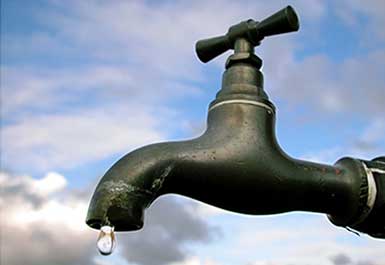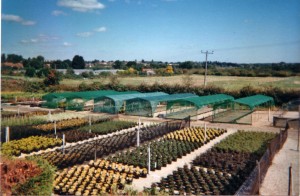I would like to wrap up my series of posts on water conservation with the original concept introduced as the foundation of conservation in the landscape–Xeriscaping.
As I mentioned in introducing Conservation in the Landscape, the principle of xeriscaping revolves around picking the right plants and grouping plants together that have similar water needs.
 I refer back to the bank analogy again to explain this concept. Remember that as you water and fertilize (organically or chemically) your soil, you have investments that will draw on those reserves in your bank. When you plant willy nilly in your soil, you have no control over how much water and nutrients go to the different investments (plants) you have made. Inevitably you will end up with too much water and too many nutrients going to one investment–causing the water and nutrients to evaporate and be wasted–and too little water and too few nutrients going to other investments, causing the investments to die, therefore wasting the water and nutrients that were sent to the plant.
I refer back to the bank analogy again to explain this concept. Remember that as you water and fertilize (organically or chemically) your soil, you have investments that will draw on those reserves in your bank. When you plant willy nilly in your soil, you have no control over how much water and nutrients go to the different investments (plants) you have made. Inevitably you will end up with too much water and too many nutrients going to one investment–causing the water and nutrients to evaporate and be wasted–and too little water and too few nutrients going to other investments, causing the investments to die, therefore wasting the water and nutrients that were sent to the plant.
The idea is to control where your resources go and adequately manage the water and nutrients that go to each investment. This can be done by selecting your plants according to the water needs and then grouping them together in one watering zone on your irrigation system.
Nurseries are the greatest danger to selecting wise investments! People typically select plants by wandering the nursery and choosing the plants that look pretty and are in bloom when they go. This causes two problems, the first being that, if you go to the nursery in early May, you only end up with plants in your yard that bloom in early May, and the second being that your plants do not necessarily have similar water needs. The simple solution to this is to go to the nursery with a list of plants beforehand and, if you see something else you like, research it out before you buy it to find out where it would fit in your planting scheme.
nursery and choosing the plants that look pretty and are in bloom when they go. This causes two problems, the first being that, if you go to the nursery in early May, you only end up with plants in your yard that bloom in early May, and the second being that your plants do not necessarily have similar water needs. The simple solution to this is to go to the nursery with a list of plants beforehand and, if you see something else you like, research it out before you buy it to find out where it would fit in your planting scheme.
The overall idea is to not only group plants of similar water needs, but also to select fewer plants with high water needs and more plants with less water needs. Just like with investing your money, if you want to select investments with higher return, it usually requires not only more money, but also higher risk of losing the investment. A good financial advisor will usually counsel you to counter high risk investments with some lower risk investments, meaning you will have some investments with not as high of a return, but that grow and flourish steadily. The idea is not to leave out the plants with higher water needs, but instead to make them highlights instead of using them for the bulk of your planting.
to make them highlights instead of using them for the bulk of your planting.
I understand that this concept is all fine and dandy for someone starting their landscaping with a clean slate. It is more difficult to group plants of similar water needs when you already have them planted, and equally difficult to zone them all together on your clock when your sprinkler system is already installed. So my recommendation to you is to just tear everything out and start again!
Okay, not really. Instead you can start by making a list of all the plants in your Outdoor Living Spaces and flower beds. There are numerous resources on the internet and at your local extension service that provide information on the amount of water a plant needs. Order the plants according to their water needs with the highest water need being number one and so on down the line to the plants with the lowest water need.
After making this list, you need to make some decisions about how attached you are to the plants closer to the number one. If you are very attached, realize that you will have to water your whole landscape to keep plant number one alive, which means wasting a lot of water and costing you even more money. If you are not that attached to plant number one, remove it from your landscape and analyze plant number two. Continue on down the line until you find a plant you must have in your landscape and water your whole landscape to satisfy the water needs of that plant. The rest will have too much water, but you can smile when you get your next water bill, because you will have saved yourself some money and water.
number two. Continue on down the line until you find a plant you must have in your landscape and water your whole landscape to satisfy the water needs of that plant. The rest will have too much water, but you can smile when you get your next water bill, because you will have saved yourself some money and water.
Even if you don’t eliminate any plants from your landscape, this project will likely open your eyes to the possibility that you have been overwatering all along. You may even be able to save money and water without eliminating any plants if you are aware which plants need the most water and keep an eye on the health of those plants, watering only as they need it.
Whether starting from scratch or with an existing landscape, finding out about what your plants need as far as water is as important for your landscape as researching an investment is before investing your hard-earned money.